The Floor Revolution You Didn’t See Coming
Picture this. You walk into someone’s home, and their floors are so stunning you can’t help but ask what they are. The homeowner grins and says “bamboo,” and you’re thinking, wait, isn’t that what pandas eat? Well, my friend, you’re about to discover why bamboo flooring has become the talk of home improvement circles across America.
I remember when my neighbor first mentioned bamboo flooring three years ago. I laughed out loud. Bamboo? For floors? It sounded like something you’d find in a meditation retreat, not a suburban kitchen. Boy, was I wrong. After doing my research and seeing the results firsthand, I can tell you that bamboo flooring isn’t just a trend. It’s a game changer that’s reshaping how we think about our homes.
The numbers don’t lie. Bamboo flooring is 73% harder than jarrah hardwood. Let that sink in for a moment. We’re talking about a grass that’s tougher than trees that have been growing for decades. Your stiletto heels, your kids’ toy trucks, your dog’s claws – bamboo can handle it all. And here’s the kicker: it often costs less than traditional hardwood flooring.
We live in times when every purchase feels like a moral choice. Do I buy the thing that’s cheap but terrible for the environment? Or do I spend more to feel good about my carbon footprint? With bamboo flooring, you don’t have to choose. You get beautiful, durable floors that happen to be one of the most eco-friendly options available. It’s like finding out your favorite pizza is actually healthy.
The home improvement industry has been dominated by the same materials for decades. Oak, maple, cherry – these have been the gold standards. But bamboo is flipping the script. It grows faster than weeds in my garden (and trust me, those grow fast), it’s stronger than traditional wood, and it comes in colors that would make an interior designer weep with joy.
What makes this even more interesting is how bamboo flooring fits into our modern lifestyles. We want beautiful homes, but we also want them fast. We want durability, but we don’t want to spend our weekends maintaining floors. We want style, but we don’t want to break the bank. Bamboo delivers on all these fronts, which explains why it’s spreading through American homes like wildfire.
Bamboo Flooring’s Rise to Fame: From Obscurity to Mainstream Marvel
Five years ago, if you mentioned bamboo flooring at a dinner party, you’d get blank stares. Today, it’s become the flooring equivalent of quinoa – everyone’s talking about it, and once you try it, you wonder why you waited so long. The transformation has been remarkable to witness.
The statistics tell an incredible story. Bamboo flooring sales in the United States have grown by over 300% in the past decade. We’re not just talking about a small niche market anymore. This is mainstream adoption, and it’s happening faster than anyone predicted. Home improvement stores that used to hide bamboo options in the back corner now feature them prominently in their flooring sections.
What’s driving this boom? Part of it comes down to education. People are learning what I learned three years ago – bamboo isn’t just some exotic material. It’s a grass, yes, but it’s a grass with superpowers. Bamboo grows in segments, creating natural joints that make it incredibly flexible. Think of it like nature’s version of engineered flooring, except it’s been perfected over millions of years.
The flexibility factor is huge. Traditional hardwood can snap under pressure, but bamboo bends. I’ve seen kids drop heavy toys on bamboo floors and watch the material flex and return to its original shape. It’s like having floors with a built-in shock absorption system. This flexibility also means bamboo can handle temperature changes better than most hardwood options.
Termites hate bamboo. I mean, they really can’t stand the stuff. While these little destroyers can turn your beautiful hardwood floors into Swiss cheese, they can’t digest bamboo’s natural fibers. For homeowners in termite-prone areas, this alone makes bamboo worth considering. It’s like having built-in pest control in your flooring choice.
Installation versatility has also fueled bamboo’s popularity. You can install it over concrete, vinyl, plywood, existing wood floors, and even over radiant heating systems. This flexibility means renovation projects become simpler and less expensive. No need to rip out your entire subfloor – bamboo adapts to what you already have.
The aesthetic appeal can’t be ignored either. Modern bamboo flooring doesn’t look like what you might imagine. It comes in colors ranging from natural blonde to rich, dark browns. The manufacturing process has evolved to create consistent coloring throughout each plank, something that can be hit or miss with traditional hardwood. When you see bamboo flooring samples in person, the quality and variety often surprises people.

The Green Revolution: Why Bamboo Makes Environmental Sense
Let’s talk about the elephant in the room – or should I say, the forest that’s no longer in the room. Traditional hardwood flooring requires cutting down trees that have been growing for decades. We’re talking about 20, 30, even 50-year-old trees that get turned into floors. When you put it that way, it sounds kind of crazy, doesn’t it?
I used to think all “eco-friendly” products were just marketing gimmicks with higher price tags. Then I dug into the actual environmental impact of different flooring options, and the bamboo story blew my mind. We’re dealing with a plant that can grow over four feet in a single day. Four feet! I’ve got houseplants that don’t grow four inches in a month.
Here’s where it gets really interesting. When you harvest bamboo, you don’t kill the plant. You cut the mature stalks, but the root system stays intact and immediately starts producing new growth. It’s like getting a haircut – the hair grows back, often stronger than before. With trees, harvesting means death, replanting, and waiting decades for maturity.
The numbers paint a stark picture. Forests cover 31% of our planet, and they’re shrinking fast. Eighty percent of the world’s species call forests their home. When we cut down forests for lumber, we’re not just taking trees – we’re disrupting entire ecosystems. Meanwhile, bamboo grows so fast and in such dense clusters that harvesting it actually helps the plant stay healthy.
Soil erosion is another piece of this puzzle that doesn’t get enough attention. When you cut down a tree, you remove its root system, which was holding soil in place. Rain comes, wind blows, and valuable topsoil disappears. Bamboo’s extensive root network stays put after harvest, continuing to prevent erosion while the new stalks grow above ground.
The carbon footprint difference is staggering. Trees take decades to absorb their maximum amount of carbon dioxide. Bamboo reaches maturity and maximum carbon absorption in just six months to three years, depending on the species. It’s like comparing a marathon runner to a sprinter – both are impressive, but one gets the job done much faster.
Global demand for forest products keeps growing while forestland keeps shrinking. It’s simple math, and the numbers don’t look good. We need alternatives that can meet our material needs without depleting natural resources. Bamboo represents a sustainable solution that actually improves with regular harvesting.
The reliability factor matters too. With bamboo, you don’t have to worry about seasonal variations, disease outbreaks, or natural disasters wiping out your supply chain. The stuff grows so fast and in so many different climates that supply interruptions are rare. It’s like having a renewable resource that actually renews itself quickly enough to matter in human timescales.
The Amazing Benefits: Why Bamboo Floors Are Winning Hearts
Durability was my biggest concern when I first considered bamboo flooring. I mean, it’s grass, right? How tough could it be? Then I learned about that 73% hardness rating compared to jarrah hardwood, and my skepticism started cracking. Jarrah is Australian hardwood known for being incredibly tough, and bamboo beats it by nearly three-quarters.
Living with bamboo floors for two years now, I can tell you the durability claims are real. My kids have dropped everything from toy cars to tablets on these floors. My wife’s heels haven’t left a single mark. The family dog’s claws barely register. It’s like the floors have some kind of protective shield that just absorbs impacts and bounces back.
Color consistency was something I didn’t know I cared about until I started shopping for floors. With traditional hardwood, you might get planks that vary wildly in color and grain pattern. Some people love that natural variation, but I wanted something more uniform. Bamboo’s controlled manufacturing process creates consistent coloring throughout your entire installation. What you see in the showroom is what you get at home.
Maintenance simplicity has been a pleasant surprise. I was prepared for the regular refinishing schedule that comes with hardwood floors. With bamboo, I sweep regularly, vacuum weekly, and occasionally use a damp mop. That’s it. The floors still look fantastic, and I haven’t had to do any special treatments or refinishing work.
The allergy benefits weren’t on my radar initially, but they’ve made a real difference in our home. Bamboo floors don’t trap dust the way carpet does, and they don’t have the grain patterns and crevices where allergens can hide like some hardwood floors do. Our spring allergy season has been noticeably better since we switched to bamboo.
Installation speed was another win. Our contractors finished our entire main floor in one day. The bamboo planks come pre-finished and ready to install, so there’s no sanding, staining, or curing time needed. We were walking on our new floors the same evening. Try doing that with traditional hardwood that needs on-site finishing.
Temperature stability has proven valuable in our climate. Our old hardwood floors would gap in winter and sometimes buckle in summer as humidity changed. The bamboo floors barely budge. They expand and contract much less than traditional wood, which means fewer maintenance headaches and better appearance year-round.
The cost savings were significant too. Quality bamboo flooring runs 25% to 50% less than comparable hardwood options. Installation costs are similar, but the material savings can add up to thousands of dollars on a whole-house project. For us, that meant upgraded kitchen appliances with the money we saved on flooring.
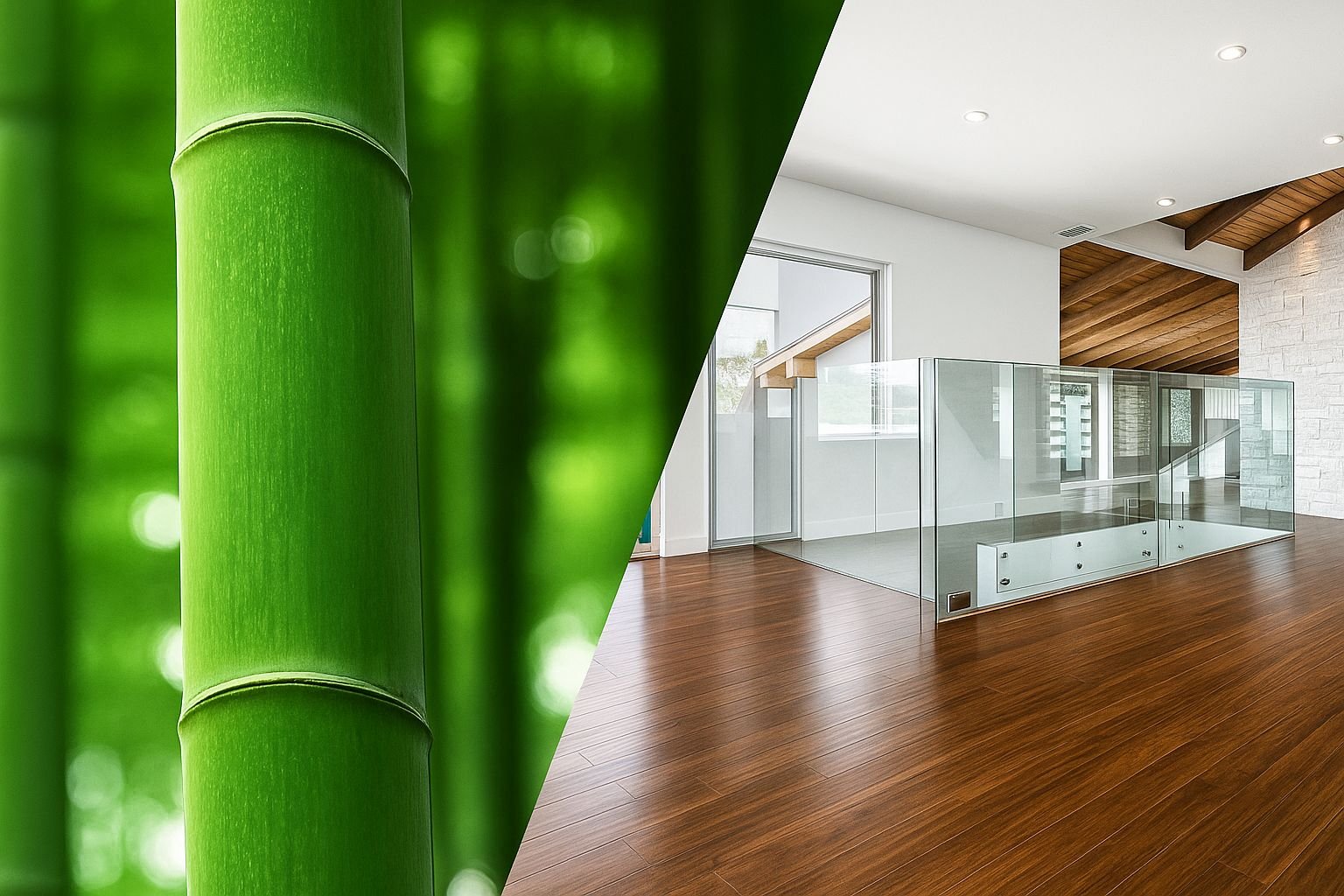
The Reality Check: Bamboo’s Potential Drawbacks
Let’s be honest about bamboo flooring’s limitations because no product is perfect. The biggest issue I’ve encountered isn’t with bamboo itself, but with the wide quality variations in the market. Low-grade bamboo flooring can be a nightmare of splitting, delamination, and finish problems. It’s like the difference between a luxury car and a cheap knockoff – they might look similar in photos, but the performance is worlds apart.
Manufacturing quality makes or breaks bamboo flooring. Cheap bamboo products often use inferior adhesives that can fail over time, causing layers to separate. The bamboo itself might be harvested too young, making it softer and more prone to damage. I learned this lesson when helping my brother choose floors – we almost went with a bargain option that turned out to have terrible reviews once we dug deeper.
Moisture sensitivity is bamboo’s Achilles’ heel. While it’s more water-resistant than many hardwood options, it’s not waterproof. I made the mistake of considering bamboo for our bathroom renovation until our contractor explained the moisture issues. High humidity areas like bathrooms, saunas, and enclosed porches are off-limits for bamboo flooring. Even in appropriate rooms, you need to clean up spills quickly.
The warping and swelling problems with moisture exposure are real. I’ve seen bamboo floors in homes where humidity control was poor, and the results aren’t pretty. The planks can cup, meaning the edges curl up, or they can crown, where the center rises higher than the edges. Once this happens, the only fix is replacement, not repair.
Quality control varies dramatically between manufacturers. Some companies have excellent standards and testing procedures. Others seem to push products to market with minimal quality checks. This makes choosing a reputable supplier critical, even if it means paying more upfront. I’ve seen too many bamboo horror stories that could have been avoided with better product selection.
Installation mistakes can magnify bamboo’s weaknesses. If installers don’t account for expansion and contraction properly, or if they install over a subfloor with moisture problems, even high-quality bamboo can fail. The material is forgiving in many ways, but it still requires proper installation techniques.
Regional climate considerations matter more with bamboo than with some other flooring options. Extreme humidity swings can stress bamboo floors even when they’re properly installed. If you live somewhere with dramatic seasonal changes, you might need to invest in better humidity control to keep bamboo floors looking their best.
The refinishing limitations are worth understanding too. While bamboo floors can be refinished, they generally can’t handle as many refinishing cycles as solid hardwood. Most bamboo floors can be refinished once or twice over their lifetime, compared to hardwood floors that might handle five or more refinishings. For most homeowners, this isn’t a deal-breaker, but it’s something to consider for long-term planning.
Making the Smart Choice: Your Bamboo Flooring Decision
After living with bamboo floors and researching the market extensively, I can tell you the key to success is choosing quality products from reputable manufacturers. The cheapest option will almost always cause problems down the road. Think of bamboo flooring like buying a car – you want reliability and quality, not just the lowest price.
Research your supplier thoroughly. Read reviews, check their warranty terms, and ask about their quality control processes. Good bamboo flooring companies will be transparent about their manufacturing methods and happy to provide detailed product information. If a supplier can’t answer basic questions about their products, keep looking.
Consider your home’s specific conditions. If you have high humidity, poor ventilation, or a history of moisture problems, bamboo might not be the right choice for certain areas. But for most living spaces, bedrooms, and kitchens with proper ventilation, bamboo performs beautifully. Match the flooring to your actual living conditions, not your wishful thinking about future home improvements.
Professional installation matters more with bamboo than with some other flooring types. While many bamboo products are designed for DIY installation, having experienced installers can prevent costly mistakes. They understand humidity considerations, proper spacing, and subfloor requirements that amateur installers might miss.
Think about your long-term plans too. If you’re planning to stay in your home for decades and want floors you can refinish multiple times, solid hardwood might serve you better. If you want beautiful, durable floors for the next 10-15 years at a great price with minimal maintenance, bamboo is hard to beat.
The environmental benefits add real value for many homeowners today. Knowing your floors came from a rapidly renewable resource that doesn’t contribute to deforestation feels good. Plus, when you eventually replace bamboo floors, they’re biodegradable, unlike some synthetic flooring options that end up in landfills forever.
Budget considerations should include the total cost of ownership, not just upfront expenses. Bamboo’s lower material costs, minimal maintenance requirements, and good durability make it economical over time. Factor in the potential energy savings from better temperature stability and the avoided costs of frequent refinishing when comparing options.
The aesthetic flexibility of modern bamboo flooring means it works with virtually any design style. Whether your home is traditional, contemporary, rustic, or somewhere in between, you can find bamboo options that complement your décor. The variety of colors and finishes available today rivals traditional hardwood options.


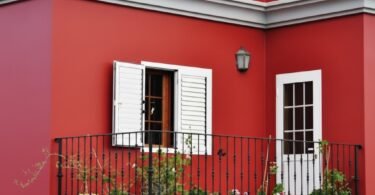
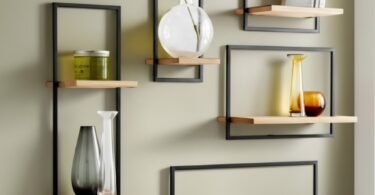
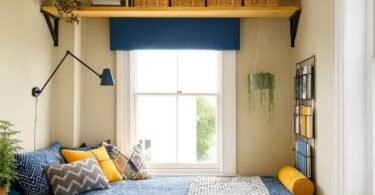
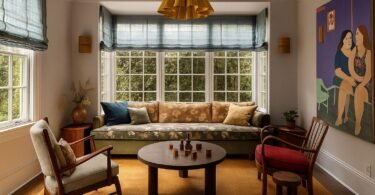
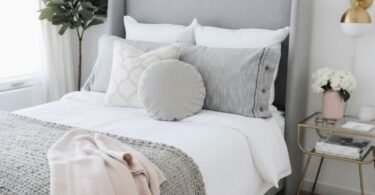
Leave a Comment